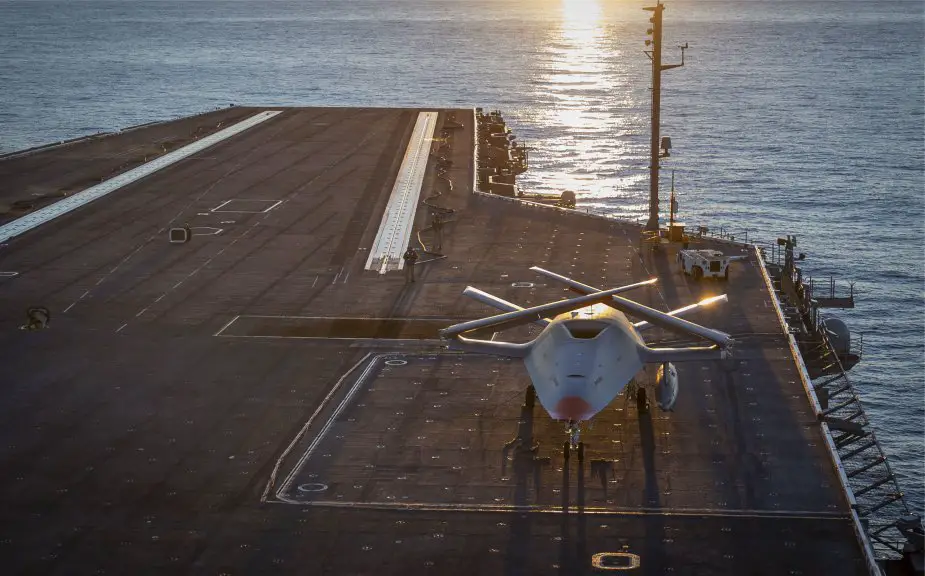According to information published by the U.S. Department of Defense on December 20, 2021, the Navy completed an Unmanned Carrier Aviation Demonstration (UCAD) of its MQ-25 unmanned air system prototype aboard the USS George H.W. Bush (CVN-77), laying the groundwork for future carrier-based UAS operations.
Follow Navy Recognition on Google News at this link
 MQ-25 unmanned air system on Nimitz-class aircraft carrier USS George H.W. Bush (Picture source: NATO)
MQ-25 unmanned air system on Nimitz-class aircraft carrier USS George H.W. Bush (Picture source: NATO)
The government team, along with industry partners Boeing and Lockheed Martin, conducted a demonstration aboard the carrier with both ground control system (GCS) and aircraft to evaluate the MQ-25 system’s integration into the carrier environment.
During the in-port portion of the UCAD, Lockheed Martin installed the prototype MD-5 ground control station in the Unmanned Aviation Warfare Center (UAWC), the CVN-based control room. The team specifically demonstrated the functionality of the GCS to the MQ-25 fleet integration team, giving them the opportunity to assess design constraints driven by shipboard installation and capture feedback on human-system interfaces.
Once underway, the MQ-25 test asset, known as T1, completed a series of test points that evaluated the functionality and capabilities of the deck handling system during both day and nighttime operations. Maneuvers included taxiing and parking on the flight deck, connecting to the catapult and clearing the landing area. Data was collected related to deck motion and wind over deck impacts to controllability and the propulsion system.
The team also coordinated the first Joint Precision Landing System (JPALS) surrogate flight with a King Air. Ship motion data collected during these first representative hardware and software approaches will be extremely valuable in refining the software, Reed added.
MQ-25 "deck operators" used Boeing’s new Deck Control Device (DCD) during all phases of the deck handling system evaluation. The deck operators were co-located with the Navy taxi directors (yellow shirts) and provided the corresponding control inputs on the DCD responding to the yellow shirt’s taxi directions.
When operational, the director and deck operators will be able to taxi the MQ-25 on the carrier flight deck to the catapult launch position and to a parking location after landing. The MQ-25 will be controlled while airborne from the UAWC where the air vehicle operator executes a pre-planned mission.
The MQ-25 will be the world’s first operational, carrier-based unmanned aircraft and is integral to the future carrier air wing (CVW). It will provide an aerial refueling capability that extends the range, operational capability, and lethality of the CVW and carrier strike group (CSG).
USS George H.W. Bush (CVN-77) is the tenth and final Nimitz-class supercarrier of the United States Navy. Construction began in 2003 at the Northrop Grumman Newport News shipyard's Dry Dock 12, the largest in the western hemisphere. She was completed in 2009 at a cost of $6.2 billion and her home port is Naval Station Norfolk, Virginia.



